BW Tucana from our constellation series has the honor of rounding off a successful fleetwide implementation of Starlink onboard. And colleagues take a moment to reflect on other sea changes in communications technology.
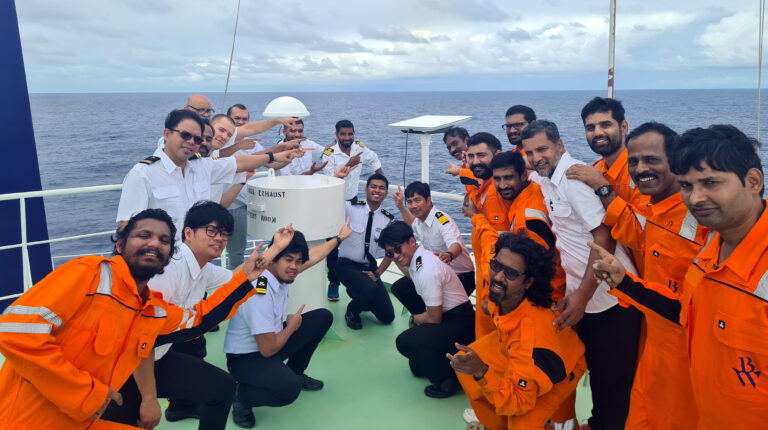
With Starlink installed onboard BW Tucana in mid-November 2023, all BW LPG’s owned and in-house managed Very Large Gas Carriers now offer high-speed, low latency internet connection onboard. Starlink now complements other available connectivity solutions such as VSAT.
It can be challenging to recall that it has only been 40 years since the internet was “invented”. Colleagues and stakeholders loosely categorized in the “Gen Y” and “Gen Z” eras may take internet connection for granted, whilst those in “Gen X” and earlier may recall these fascinating transitions. Our milestone with Starlink had some colleagues reflecting on the sea change in communications, and we attempt a non-exhaustive reflection of the many technological breakthroughs in shipping, from the eyes of crew and employees.
Flagging Concerns
In the 1800s, ships relied on sound signals from horns, whistles and bells, flag hoists, semaphore flags as well as Morse code. Crew onboard BW Var are pictured here using semaphore flags to send a message. (Message can be found at the end of the article). Says Even Olsbø from our HR department, who was a communications officer with the Norwegian Navy prior to joining BW, “I remain fascinated by the old communications techniques. If spoken language was a barrier, we could rely on international maritime signal flags, whose meanings are very precise and well understood by mariners.”
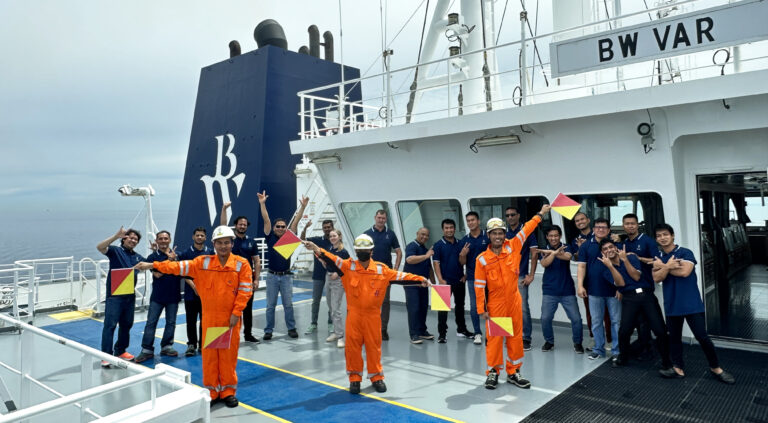
From Signals to Voices to Typed Messages
In the late 1800s, communications were largely in the form of radio waves transmitting Morse code. This technology further advanced in the early to mid-1900s, when radio communication became available, enabling ships to transmit voice messages in addition to Morse code.
In the mid-1900s, telex machines were introduced and allowed for the rapid transmission of typed messages, overcoming the limitations of manual Morse code transmission. In the late 1900s and early 2000s, emails took over and became the dominant form of communication.
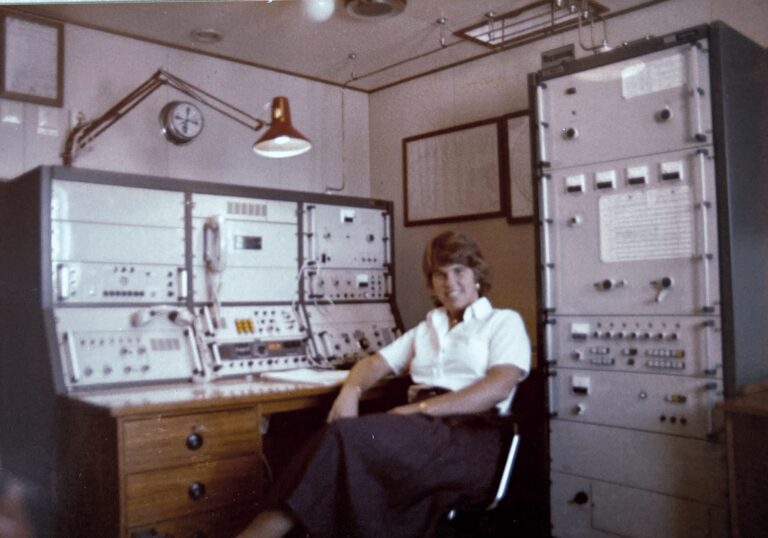
Anne Silvera from our Finance team sailed in various capacities since she was 19. She became a Radio Officer in 1979 after completing her training. Having been with BW since 1988 through our Helge R. Myhre legacy, she shared some pictures where her life revolved around finding connectivity with the nearest radio station. Says Anne, “As a radio officer, I oversaw all communications. Using Morse code, I would send position telegrams to the office daily, so that they would know where we were and that we were not lost at sea. If we were sailing in the Indian Ocean, you don’t hear much. It was very difficult to find a radio station to send telegrams. The Indian Ocean is so big, and it could be three weeks before we saw another vessel. I would oftentimes scramble to my station in the middle of the night if the atmospheric conditions were ideal and I would feel such a sense of achievement when I managed to reach a radio station and send my telegram.”
She added, “I remember working on my first telex machine in 1982. We would send messages to the company and to the agent at our next port. Communications were solely reserved for business purposes, and because we were charged according to the length of our messages, we used a lot of abbreviations and short form. I was introduced to satellite phones after telex machines in 1984-1985. This was also a game changer. Phone calls, however, were very expensive, at about NOK 50 (USD 4.70) per minute – remember, this was in the 1980s! By 1990, we hardly used Morse code anymore. I may have forgotten most of the cadence in Morse code, but if I see a movie and Morse code is used, I can tell if it’s real, or if they are faking it.”
Lag, Slow Loading Speeds and Multi-Day File transfer
Entering the twenty-first century, ships equipped with satellite communication systems could send and receive emails, enabling near-instantaneous communication with onshore offices and facilitating crew members’ contact with their families. However, challenges such as limited bandwidth and connectivity issues persisted.
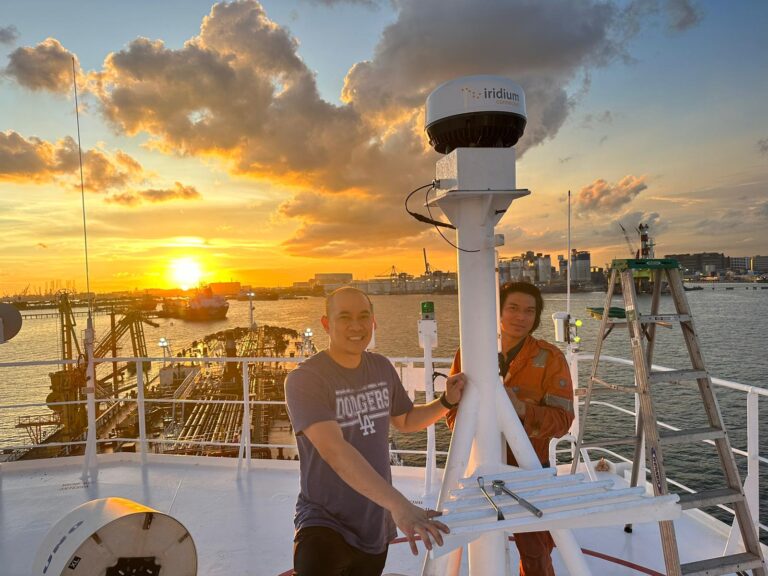
Says Captain Anuj Sheel, who has been sailing for the past 22 years, “I used to get letters from home twice a month. As a young cadet, I remember not writing back for a while, and my worried family contacted the office who then called the Captain onboard. I was punished by the Captain for making my parents worry, and was made to write a letter every day for 15 days. In those days, the MF/HF radio station was very noisy as it started up. Twice a day, it would go ‘click clack click clack’ to exchange data, send important emails to the company as well as daily noon reports.”
He added, “If we wanted to send emails, we would have to ask the Captain for time on his desktop, type our messages, and he would send it for us. When we had replies, some Captains would print the replies out and pass it to us. For me this was in 2011; it can be hard to imagine that this was not too long ago!”
In recent years, the maritime industry has witnessed another transformative leap with the advent of satellite internet constellations like Starlink. This technology, developed by companies like SpaceX, offers high-speed, low-latency internet access to ships in remote areas, overcoming the limitations of traditional communication infrastructures. Starlink has not only revolutionized personal communication at sea but has also facilitated the implementation of advanced technologies such as autonomous navigation and real-time data transmission.
Explains Captain Sheel, “There are blind spots in some of the routes we sail, and sometimes we will have no satellite coverage for three days. And when we reach shipping hubs, the bandwidth is congested and we see severe limitations in connectivity. In between, depending on directions, our vessel’s funnel may block satellite reception too and we must wait until we are aligned again. When Starlink was installed, we felt as though Christmas came early!”
The Changes in our Lifetime
Going onboard a vessel can sometimes feel like being transported back in time as crew onboard grapple with very slow speeds. Says Juzer Vasi, Head of Business Solutions – Fleet, “Not five years ago, remote troubleshooting used to be very tedious due to slow loading speeds. We could spend days on what may be a simple issue. Or, we had to send IT engineers onboard and spend over USD 8,000 per job request. Now, what we used to think of as special effects in movies, are real possibilities. We can pull data real-time from vessels and remotely connect to troubleshoot within minutes. Our IT engineers can now focus on more strategic action items when they are onboard.”
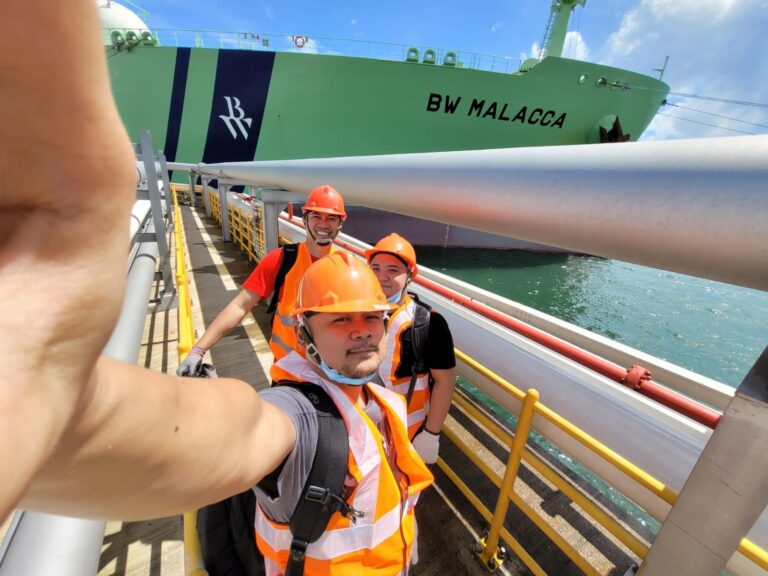
He adds, “We have made many shared IT kiosks obsolete. There are also no more fax machines onboard, although telex continues to be compulsory from a safety perspective as a fail-safe back-up and fulfills Global Maritime Distress and Safety System (GMDSS) requirements. Only a few years ago, we had to physically mail hard drives and USB sticks to vessels for them to download Microsoft updates. Now patches are done in minutes, and remotely through Starlink.”
While it is still challenging for colleagues at sea to watch multiple episodes of their favorite movies on Netflix or HBO during rest hours, the speed of connectivity means that staying connected with family, friends and the latest news outside of shipping is now a more positive experience. It is a remarkable trajectory from manual signaling methods and Morse code to wireless telegraphy, radio communication, telex machines, emails, and satellite-based internet connectivity. Each innovation has brought unprecedented improvements in speed, reliability, and the volume of information that can be transmitted, ultimately contributing to safer, more efficient, and more connected maritime operations.
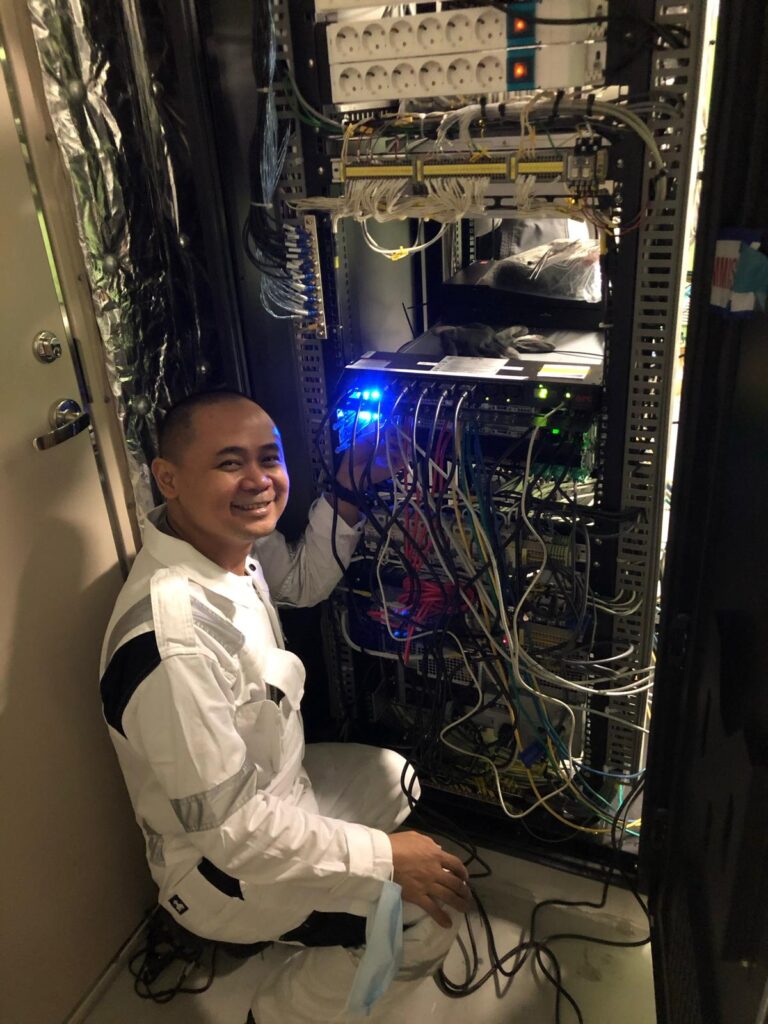
With new technology, the IT team must now manage risks that were not previously present. We must keep our IT & OT technology cyber secure, to protect critical processes such as during loading or discharge operations. Colleagues onboard must also be mindful of malware, ransomware and phishing attempts.
What’s next after Starlink? Looking at the runes, it may be the beginning of Connectivity as a Service (CAAS). Says Juzer, “We will be looking at enhanced connectivity solutions available which comprises of multiple service providers so that we have LEO & GEO-satellites in combination with 4G/5G networks. In future, we will see agnostic partners who will manage a company’s connectivity based on best-available satellite networks in the area where a vessel is. This means no more blind spots for our crew, and no more waiting to be reconnected.”
Corporate Communications thanks colleagues Anne Silvera, Captain Anuj Sheel, Juzer Vasi and Even Olsbø for their time and contribution towards the writing of this story.
Message that BW Var is sending using Semaphore flags: “Bye” to a retiring colleague.
Keywords: technology, tech, IT, informs, progress, maritime, shipping, evolution, sustainability, development, R&D, research and development, crew, crewing, connection
Read more:

